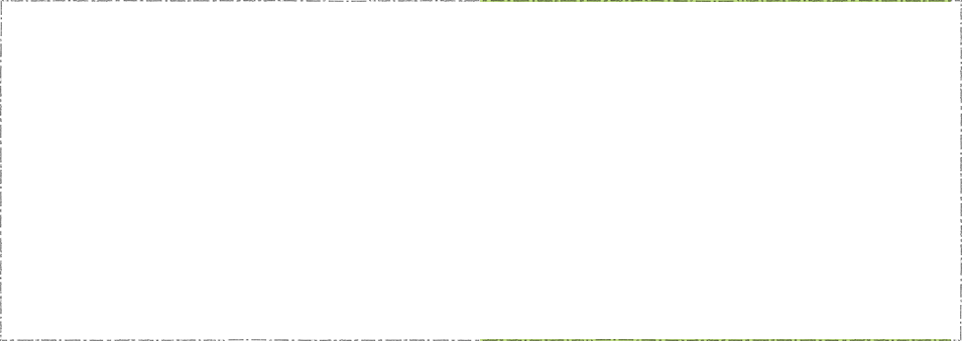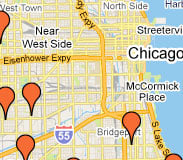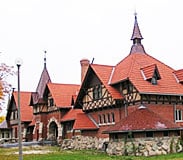In 1853, a savvy New York lawyer purchased 300 acres of property south of Chicagos Loop between what is now 51st and 55th Streets. Foreseeing the potential for community development, Paul Cornell deeded 60 acres of his land to the Illinois Central Railroad in exchange for a local station and service to Chicagos Loop. The community grew, and in 1861, Hyde Park extended its boundaries and was incorporated as a village. In 1889, the village was annexed to the city of Chicago.
In 1890, two events forever changed the neighborhood of Hyde Park. The first was the selection of Jackson Park as the site for the 1893 Worlds Fair. The second was the founding of the University of Chicago. These two milestones resulted in a population and commercial explosion. The 1893 Worlds Fair, also called the Worlds Columbian Exposition, was designed as a celebration of the 400th anniversary of Christopher Columbus arrival in America. Open between May 1, 1893 and October 30, 1893, The Columbian Exposition brought an estimated 25,000,000 people to the Hyde Park neighborhood. Of the more than 200 buildings that were built for the fair, only one remains in Jackson Park. During the 1920s, the Palace of Fine Art was stripped down to its skeletal structure and rebuilt in stone as a museum. On June 19, 1333 the Museum of Science and Industry opened to the public and soon became one of the largest science museums in the world, housing more than 35,000 artifacts and almost 14 acres of interactive exhibits. Founded by John D. Rockefeller and the American Baptist Education Society, the University of Chicagos gothic-style campus was built on land donated by Marshall Field, owner of the historic Marshall Field and Company department store. Within a few short years the university became one of the most elite educational institutions in the country.
By 1892, the City of Chicago had extended the elevated train to 319 East Garfield Boulevard. The Garfield station house is the oldest station facility on the "L. Although the CTA demolished the platforms during the construction of a new, modern, steel and glass Garfield station, the original station house was designated as a Chicago Landmark on December 12, 2001.
At the beginning of the 20th century, a number of significant architects began building in the Hyde Park community. In 1909, Frank Lloyd Wright designed the Robie House, located at 5757 South Woodlawn Avenue, for bicycle manufacturer Frederick C. Robie. The horizontal lines representative of the landscape of the Midwest came to be known as prairie style. The Robie House was designated as a Chicago Landmark in 1971. Wright also designed the Midway Gardens in 1914, which once stood at Cottage Grove Avenue and the Midway Plaisance on the border of Hyde Park and Woodlawn. Midway Gardens was initially extremely successful and visually stunning but was demolished in October 1929.
Between the 1930s and the 1960s, the community began to deteriorate. Older homes were converted into rooming houses or subdivided into apartments. Although the population of the community increased, new construction halted. In addition to the physical deterioration of property, crime rose and residents became concerned about neighborhood safety. In 1949, the Hyde Park-Kenwood Community Conference formed to help residents analyze community problems and work towards solutions. Over the years, the organization has worked diligently not only to upgrade property values but on issues including school improvement, tenant/landlord relationships, womens rights, medical care, and environmental issues.
Conscientious community organizing and work, in combination with federal funding from the first Urban Renewal Plan, resulted in a rebirth of Hyde Park. In 1979, the National Register of Historic Places and the City of Chicago designated the Hyde Park-Kenwood neighborhood as a historic district. Throughout the 1980s and 1990s, new construction began to replace vacant lots and the neighborhood once again became a desirable residential community.







